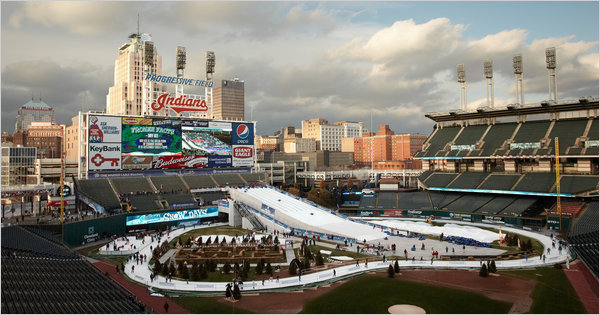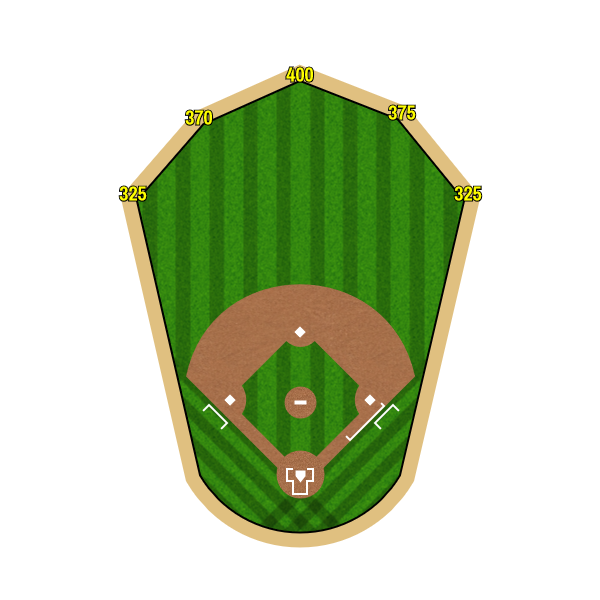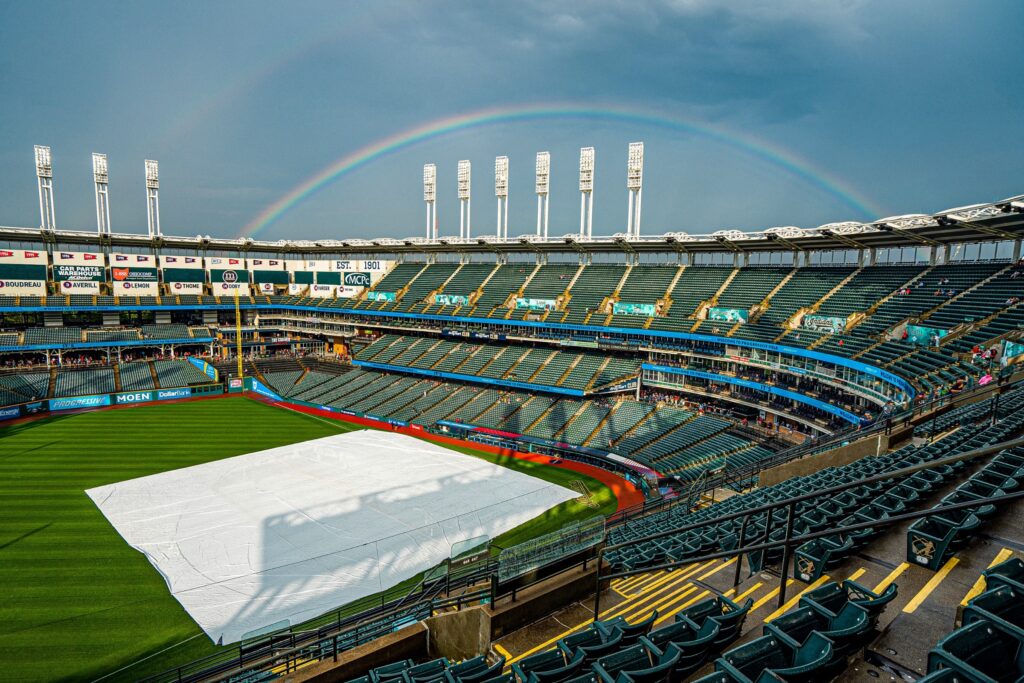Progressive Field is the most famous sports landmark in Cleveland, OH. Home to the Cleveland Guardians (Formerly Indians), one of eight MLB charter members, the stadium was exclusively constructed to revive baseball in the city. The world-class ballpark symbolizes a fan-friendly urban facility and became the keystone of downtown development that was built upon Cleveland’s “comeback” in the 1980s. It made history in many ways, from funding to design and finally, the mega construction boom in Cleveland.

The History
When the Cleveland Indians came into existence in 1901, they chose League Park as their home. In 1932, the MLB team began to play some of their matches at Cleveland Stadium, which was originally planned as part of the city’s failed 1932 Olympic bid. The Indians adopted the stadium as their permanent home with the start of the 1946 season. Efforts to build a new ballpark for the Indians started in 1984 with a proposal to have a public-funded stadium. While the land became available in December 1985, designs became ready by April 1986. Simultaneously, the 75,000-plus Cleveland Stadium was big enough for a crowd of around 40,000 cheering the home team in the late 1980s. This led the Indians to press for a new home.
Though Cuyahoga County voters rejected a hike in property taxes to fund the project, they favored a “sin tax.” An increase in sales tax on alcohol and cigarette for 15 years helped finance 45% of the construction cost. The Cleveland Indians agreed to provide the rest 55% funds.
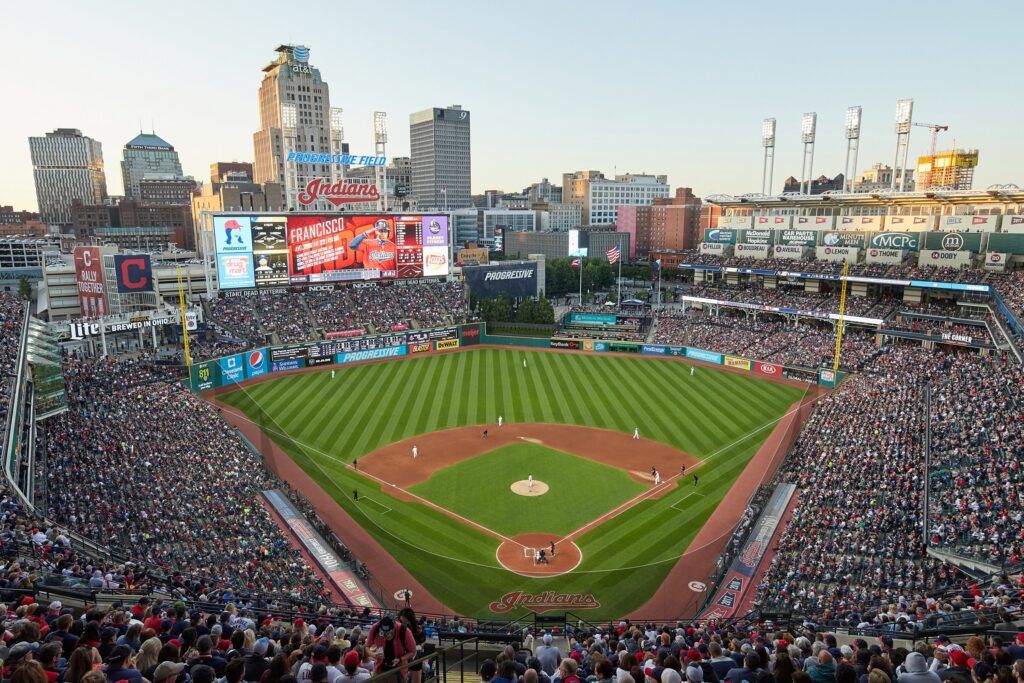
The construction began in January 1992 and the stadium was initially named “Cleveland Indians Baseball Park.” However, Ricard Jacobs, the owner of the MLB franchise, purchased naming rights in 1994 and it became Jacobs Field. In 2008, insurance major Progressive Corporation acquired the naming rights for 16 years for a sum of $58 million and it became Progressive Field.
Progressive Field was opened to the locals on April 1, 1994, with the then US President Bill Clinton throwing out the first pitch.
Design and Features
Progressive field heralded the era of retro-modern ballparks that influenced the renovated designs of Angel Stadium of Anaheim and Kauffman Stadium and newly built Chase Field, T-Mobile Park, and Minute Maid Park. Its designer was Populous, then known as HOK Sport, which also designed Oriole Park at Camden Yards, the first retro-classic baseball stadium.
The stadium boasts asymmetrical fences of varying heights with the objective to offer a thrilling view of Cleveland’s downtown skyline. Its left-field wall – the “Little Green Monster – is 6-meter high while the right and central boundaries are just 3-meter high. Stepped tiers with traditional hunter-green seats lead to the smaller upper deck that looks over the 12-acre field of Kentucky Bluegrass. Progressive Field’s leftfield continues to have bleachers. There are 19 huge light towers with their distinctive “toothbrush” look.

The exposed steel design of Progressive Field syncs well with Cleveland’s industrial heritage. A renovation completed in 2015 brought down the number of luxury boxes from 121 to 115. It also boasts many eateries offering a spectacular view of the field. Terrace Club has multilevel dining facilities and facilities apt to host private and corporate events. In 2012, Progressive Field inaugurated Kids’ Clubhouse, an exclusive area for kids with slides, a mini baseball area, a batting cage, a climbing wall, and an art and craft studio.

The 2007 renovation saw the addition of Heritage Park. It is a dedicated place to honor 38 of the Cleaveland Indians’ greats and the most memorable games of the home team. In 2014, Progressive Field underwent a two-year upgradation with a new scoreboard, changes in bullpens, reconstruction of the area around the right-field gate, the addition of a multistory bar, reduction in rows to add more open area, installation of LED field lights, and creation of enlarged terrace areas.

Purely Baseball Things To Know
- The Cleveland Indians won 1995, 1997, and 2016 AL Pennants and 10 Central Division titles while based out of Progressive Field.
- Bill Clinton, former US President, was the ceremonial pitcher to open the stadium for MLB games on April 4, 1994.
- The inaugural day April 1, 1994, saw the Indians routing the Pittsburgh Pirates. During the first official game three days later, the home team beat defeated the Seattle Mariners 4–3. It went on for 11 innings.
- Progressive Field was lucky for the Cleveland Indians in its very first season. The home team won 35 games against 16 losses. This included an 18-game unbeaten streak.
- The Cleaveland Indians have played playoff games in 12 seasons before the home crowd.
- In 1997, Progressive Field hosted both the All-Star Game and the World Series. This was the 10th such example in the MLB and the first since 1977. Only a handful of AL stadiums have the honor to host both games in the same season.
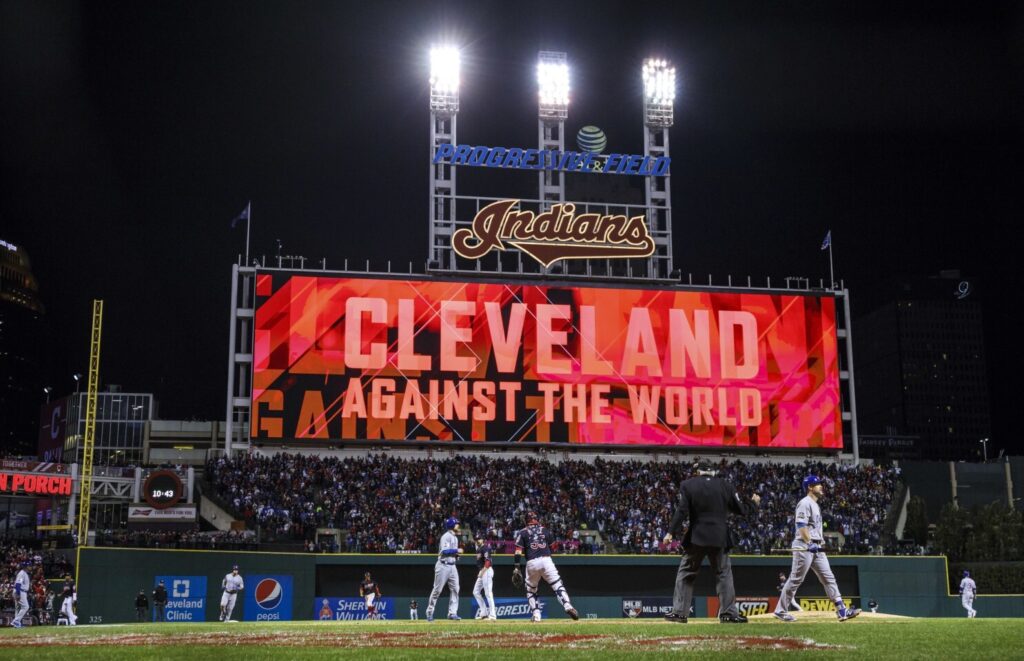
- A year after the opening of the ballpark, the Indians stormed into playoffs breaking the 41-year-old jinx in 1995.
- On July 3, 1999, Jim Thome of the Indians hit the longest ever home run record at Progressive Field. It covered a distance of 511 feet (156 m).
- In 2019, Progressive Field hosted its second MLB All-Star Game.
- From 1995 to 2001, the Cleveland ballpark recorded 455 consecutive sellouts. At least 81 times this happened before the opening day. It was a record that Fenway Park broke in 2008.
- The team name, “Indians” was renamed to the Cleveland Guardians at the conclusion of the 2021 season.
Non-Baseball Events
- Progressive Field had its first ice hockey game on January 15, 2012.
- Since 1995, the stadium continues to host concerts, music festivals, and events. Jimmy Buffett, Brad Paisley, Jason Aldean, Billy Joel, Luke Bryan, and Miranda Lambert had their performances at the stadium.
- The ballpark hosts annual Snow Days even that goes on from November to January offering lots of winter sports and fun-filled activities.
